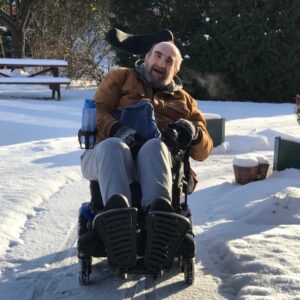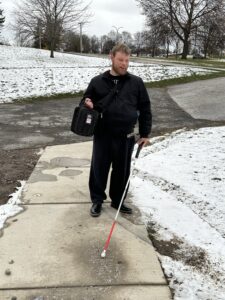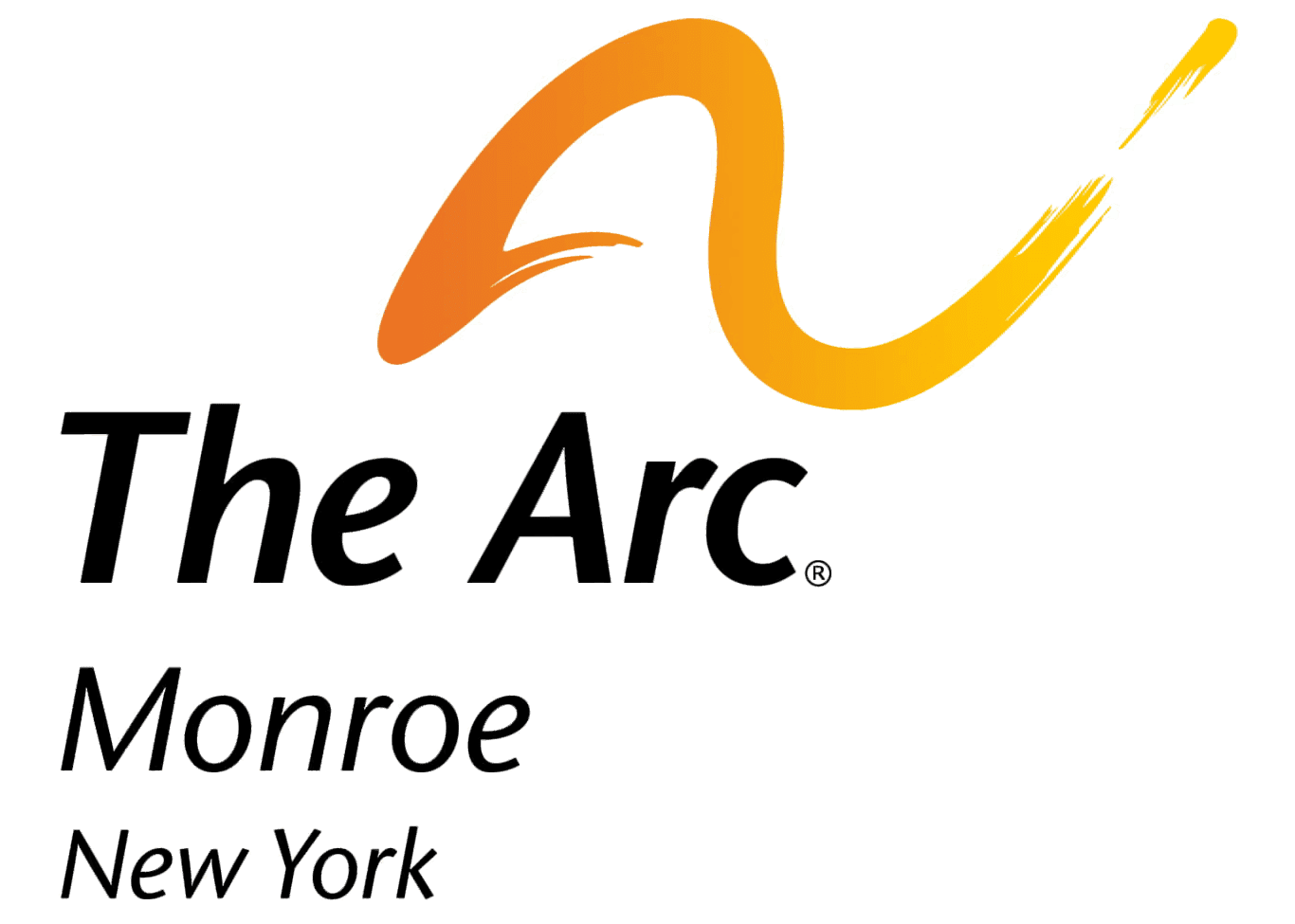 Doug Czech has been going to Ballantyne Day Services for 5 years and is an Eagle Scout. Before Doug came to Ballantyne, he worked in the Wegmans Bakery Department for more than 20 years, retiring in 2016. He enjoys playing instruments and singing and is even learning how to dance. In his free time, Doug enjoys chatting with friends, doing arts and crafts, and watching old movies.
Doug Czech has been going to Ballantyne Day Services for 5 years and is an Eagle Scout. Before Doug came to Ballantyne, he worked in the Wegmans Bakery Department for more than 20 years, retiring in 2016. He enjoys playing instruments and singing and is even learning how to dance. In his free time, Doug enjoys chatting with friends, doing arts and crafts, and watching old movies.
 I’m Doug and I’ve been in a motorized wheelchair for a few years now. I don’t mind the cold and I just remind myself to dress warm each time I see it’s cold outside. More than 50 years ago, I was a Boy Scout and we learned how to make lean-tos to sleep in to keep the cold air out. Even though the cold air doesn’t bother me, I still need to take some precautions when I go outside in case it’s icy or the snow isn’t shoveled where I am.
I’m Doug and I’ve been in a motorized wheelchair for a few years now. I don’t mind the cold and I just remind myself to dress warm each time I see it’s cold outside. More than 50 years ago, I was a Boy Scout and we learned how to make lean-tos to sleep in to keep the cold air out. Even though the cold air doesn’t bother me, I still need to take some precautions when I go outside in case it’s icy or the snow isn’t shoveled where I am.
I avoid going in the snow because the wheels can’t turn in the snow and I would be stuck. When it’s icy outside, I just take it slow in my motorized chair. I make sure to use a low speed because I don’t want to fly out of here and I can picture my chair slipping, causing me to tip over. If I didn’t have a seat belt on while in my chair, I could be lying on the ground. And just like any other day, I also need to be aware of my surroundings, so my chair doesn’t bump into people or things.
I like to take the sidewalks when I go downtown, and sometimes there can be cracks which is already something I need to look out for. With it being potentially icy or snowy in those spots, I need to be even more cautious and go around the cracks, so I don’t slip or get stuck. One challenge I see this winter is being able to see my surroundings behind me. As this is only my second or third winter in the chair, I’m still practicing with backing up. I’m learning to better turn my head to see what is behind me and where I’m going.
My advice for those who are new to motorized wheelchairs in the winter is to give yourself enough time before leaving to go slow and be careful as needed. I would also advise people to keep an eye on their surroundings so they can avoid any obstacles that may come across their path.
 Andy Hershelman has been going to Community Arts Connection for 16 years. He enjoys playing instruments in music class, taking part in sewing class, and writing songs in his songwriting production class. In his free time, he likes to go for walks, go to the movies, and ride go karts. Andy’s favorite color is yellow and his favorite activity is going to the park.
Andy Hershelman has been going to Community Arts Connection for 16 years. He enjoys playing instruments in music class, taking part in sewing class, and writing songs in his songwriting production class. In his free time, he likes to go for walks, go to the movies, and ride go karts. Andy’s favorite color is yellow and his favorite activity is going to the park.
 I’m Andy and I’m visually impaired. I’ve used a cane to get around my whole life and it’s especially useful in the winter when there is snow and ice. The cane is useful for feeling around spaces in between hallways and walls. It’s used for walking out in the community and is a great tool to promote safety and guidance.
I’m Andy and I’m visually impaired. I’ve used a cane to get around my whole life and it’s especially useful in the winter when there is snow and ice. The cane is useful for feeling around spaces in between hallways and walls. It’s used for walking out in the community and is a great tool to promote safety and guidance.
When I go out, I can tell if there’s ice by the way my cane feels along the ground when I tap it. I use a side to side motion with the balance of the steps I take to tell if it’s slippery. It’s called safety guidance with laterality. When I’m using the cane and there’s a little bit of snow on the ground, I can detect that by moving the cane side to side and when the cane starts to linger, I can tell there is snow and need to walk carefully.
